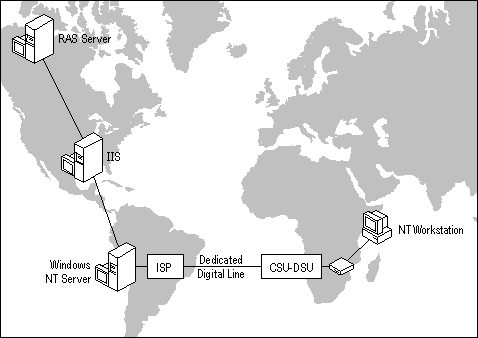
The computer that is connected to a telephone network is physically connected by using a hardware device such as a network adapter (also known as a network interface card, or NIC), modem, or ISDN card attached to the computer and a telephone line. The hardware device and device driver that you install on the computer that is connecting to the Internet must support the type of telephone line service and ISP account provided by your telephone company and ISP.
The telephone line connection to the local telephone central office is sometimes referred to as the last mile, at the maximum 18,000 feet of wiring that physically connects a private enterprise telephone line to the public telephone network. The distance between your telephone connection to a PSTN central office can affect your ability to get the PSTN service you need to support your bandwidth requirements.
You may need additional hardware to support your choice of telephone line service. Dedicated digital lines require additional networking equipment to attach a server or workstation to the Internet. For example, some configurations require a Channel Service Unit/Data Service Unit (CSU/DSU) that takes the digital data from the telephone network and processes it for the computer that is connected to the Internet on the digital line.
The additional CSU/DSU networking hardware is installed to physically connect your computer and modem to a dedicated digital line, for example, as shown in the following figure.

Figure 3.2 Hardware needed for digital line connectivity
Because the Internet continues evolving, other possible configurations of hardware and software may replace the typical CSU/DSU unit illustrated in the preceding figure. You also need additional equipment on the computer that is connected to the digital line. For more information on this additional equipment, see Chapter 4, "Using ISDN."
The output from the CSU/DSU goes to a router located at your site. A cable is run from the router to the LAN adapter card on the computer that is connecting to the Internet. Before purchasing your CSU/DSU equipment, consider these factors:
CSU/DSU equipment bandwidth. Some CSU/DSU units operate at 56 kilobits per second, some work at T1 speeds, and some have a range of frequencies at which they operate.
Router bandwidth. Routers have similar bandwidth capabilities, and your router must match your CSU/DSU unit bandwidth.
ISP equipment compatibility. Your CSU/DSU and router must be compatible with the hardware used by your ISP.